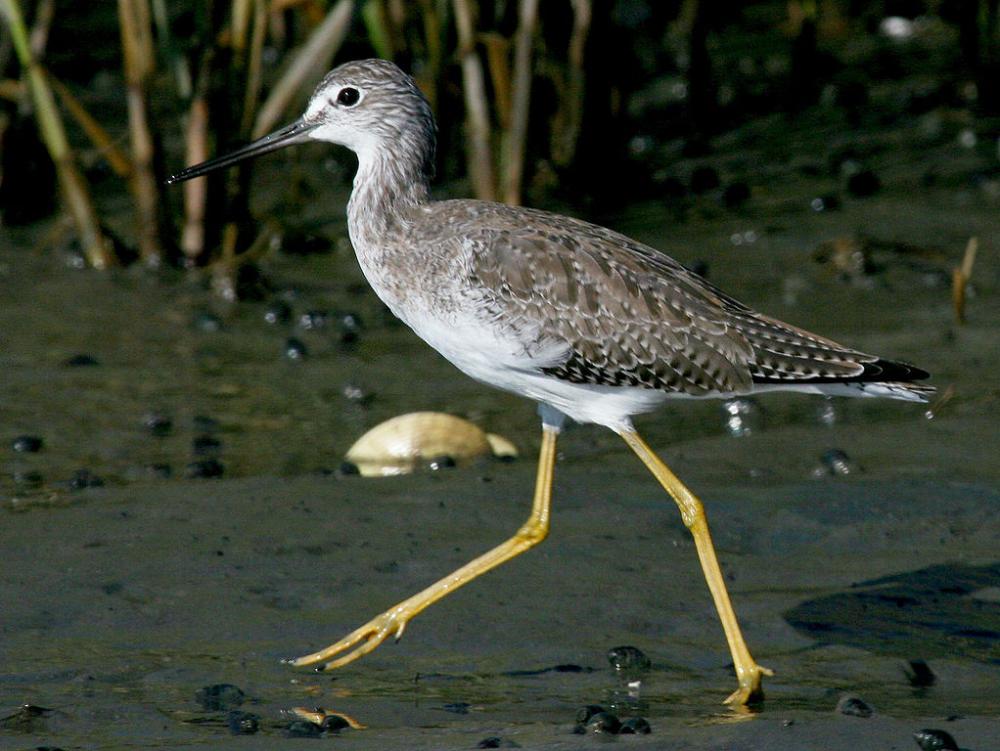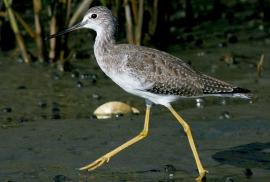Guide to Boreal Birds
Overview
The larger of the two yellowlegs is a noisy and conspicuous bird. It is also more wary than its smaller relative and flushes at a greater distance. It often runs about wildly in shallow water or wades up to its belly and occasionally even swims. With its long legs, it easily obtains food in pools. The bill, slightly upturned, is used to skim small animals from the surface of the water as the bird swings it from side to side. This behavior, seldom seen in the Lesser Yellowlegs, makes a Greater Yellowlegs recognizable at a long distance.
Description
14" (36 cm). A slender, gray-streaked wader with conspicuous white rump and long yellow legs. Lesser Yellowlegs is similar but smaller, with a shorter, straighter, and more slender bill and a different call.
Voice
A series of musical whistled notes: whew-whew-whew.
Nesting
4 tawny eggs, heavily marked with brown, in a slight depression on the ground in a damp open spot.
Habitat
Breeds on tundra and marshy ground; frequents pools, lakeshores, and tidal mudflats on migration.
Range/Migration
Breeds from south-central Alaska eastward across central Canada to Maritime Provinces and Newfoundland. Winters mainly along coasts from Washington State and Virginia southward, and along Gulf Coast.



